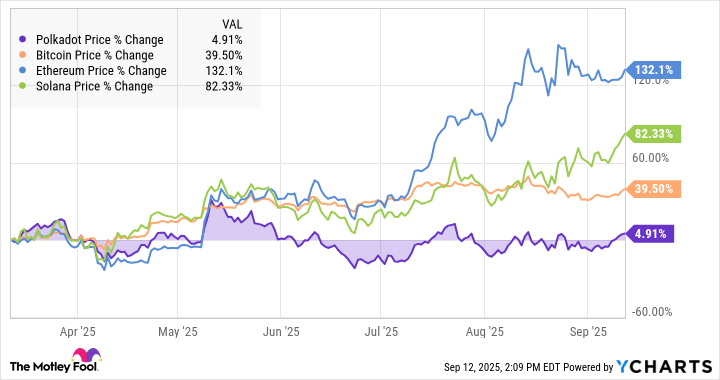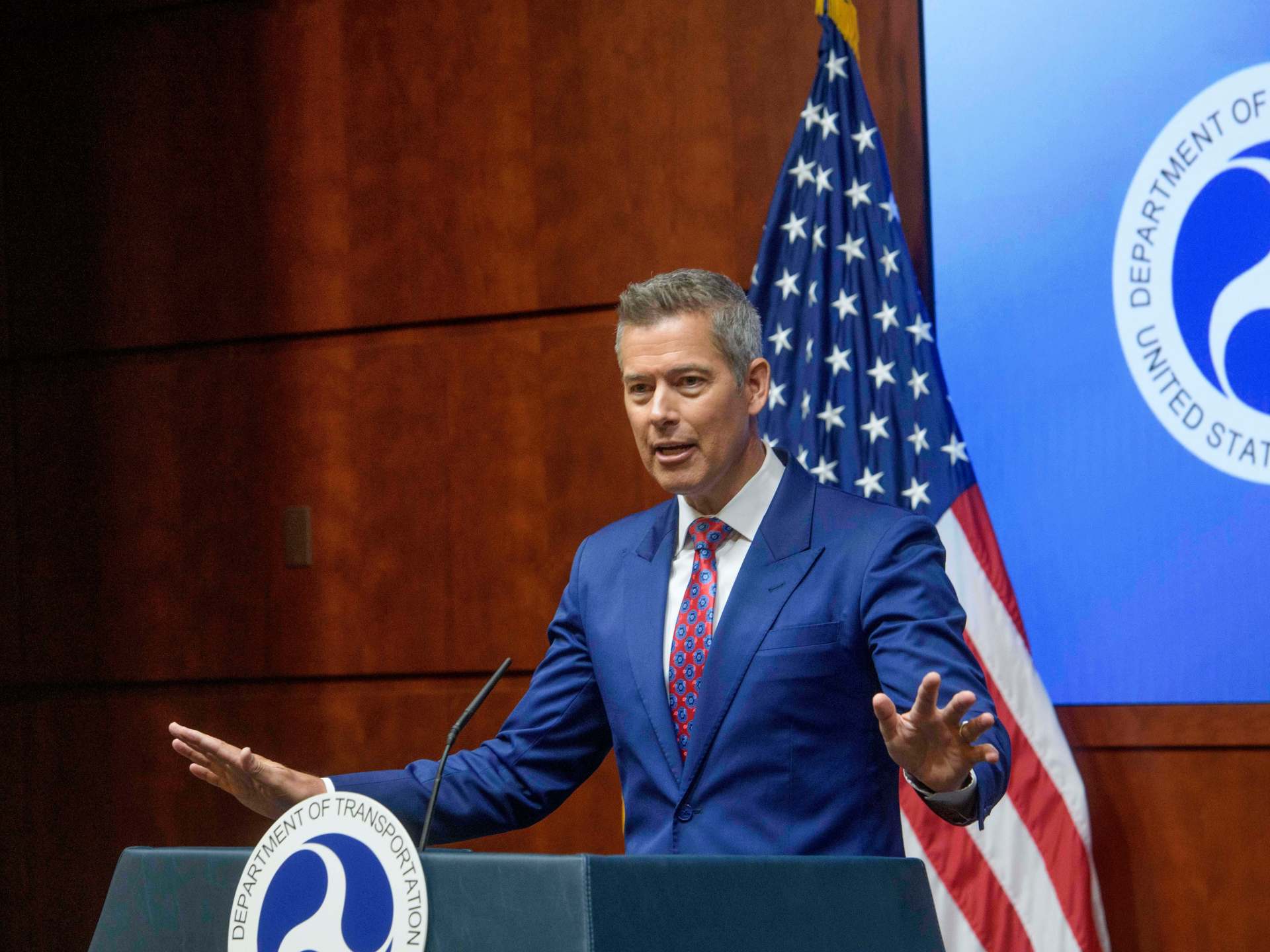Polkadot Is Making App-Building Faster and Easier — Could That Lift the Lagging DOT Token Over Time?
Polkadot’s next phase: faster, better, and easier to use. Is the Web3 token ready to take off?
Investors in the Polkadot (DOT -3.88%) cryptocurrency have been craving game-changing news for a while now. The crypto market is having a great summer overall with fantastic returns on leading names like Bitcoin (BTC -0.57%), Ethereum (ETH -1.18%), and Solana (SOL -0.89%). But nobody told Bitcoin where the party was happening. As of Sept. 12, it gained less than 5% over the last 6 months:
Polkadot Price data by YCharts
Forget the chart for a moment, though. App builders, not price charts, ultimately drive durable value in most cryptocurrencies, and especially the developer-friendly Polkadot. And I have good news: Polkadot is readying two builder-centric platform upgrades that could change the trajectory of this lagging cryptocurrency. Say hello to the JAM scaling upgrade and a ready-to-code DevContainer.
Here’s what changed — and why it could matter for DOT investors.
Header JAM: Faster blocks, flexible projects, and elastic scaling
The chain-spanning connector package known as Polkadot is about to get a massive makeover. The incoming technical changes are so powerful, Polkadot’s backers in the Web3 Foundation call it “Polkadot 3.0.”
I could get all up in the nerdy weeds with the changes, built around the Join Accumulate Machine (JAM) upgrade. Trust me, I’m tempted to go there. But you’re not here for that geekery, so let’s keep it simple: Polkadot is about to get much faster, more flexible, and easier to use.
The global network of computing nodes that validate Polkadot transactions and execute code in its smart contracts is already one of the fastest blockchains on the market. JAM will multiply the computing power of this platform by 10, by some estimates. Polkadot co-founder Gavin Wood calls it “a supercomputer on the blockchain,” with easy and instant access to exactly the number-crunching resources your app needs.
Gone are the unpredictable auctions for computing time, in comes a new project funding system. Parachains are still a thing, and existing Polkadot projects will be fully compatible with the new JAM core. It’s just going to be much easier to get your hands on the right resources at the right time. There’s a price list now; just pay for your computing power and you’re good to go. Easy as Polkadot pie.
Image source: Polkadot.
DevContainer: One-command setup makes it easy to get involved
The new DevContainer feature may not feel as important, but anything that attracts more developers to the Polkadot platform should also be good for the tightly integrated cryptocurrency in the long run.
The Polkadot Smart Contracts DevContainer does exactly that, at least in theory. Getting started as a Polkadot developer has never been easier. Traditional setups of a new development system can be a slow and frustrating process. Now, the manual setup and configuration is replaced by one command and lots of automation.
I can’t promise that this system will be popular with new or existing Polkadot app builders, but it sounds pretty good to my (non-developer) ears. Instant setup and then you’re dealing with the power-packed JAM system — where do I sign up?
Why this matters for DOT holders (and what to watch)
The DevContainer package is already available and JAM should take over as the main Polkadot engine before the end of 2025. These helpful upgrades coincide with rising interest in Web3 apps, giving more control to app users and less of it to massive social network corporations.
Polkadot’s chart has actually been lagging behind other cryptocurrencies for years:
Polkadot Price data by YCharts
And it’s kind of funny. Using Polkadot in an app project, you can connect to many other cryptocurrencies and move data, monetary assets, or code from one blockchain to another. If Web3 is the blockchain-based foundation of the next internet epoch, then Polkadot is the digital glue that holds it together.
Will people actually use it?
JAM replaces clunky auctions with pay-as-you-go capacity, and the DevContainer gets builders going in minutes. If people show up, it could turn into a real block party for DOT holders as usage drives demand.
I think it’s time to connect the DOTs between better tech and investor value. Polkadot has been struggling in the shadows for too long, letting the likes of Ethereum and Solana have all the headline-inspiring fun. That could change when JAM rolls out.
I don’t expect a sudden spike in DOT prices, but a lucrative rise over time as developers and app users (i.e., pretty much everybody) adopt this technology in real-world smartphone apps and cloud platforms.
Anders Bylund has positions in Bitcoin, Ethereum, Polkadot, and Solana. The Motley Fool has positions in and recommends Bitcoin, Ethereum, and Solana. The Motley Fool has a disclosure policy.




